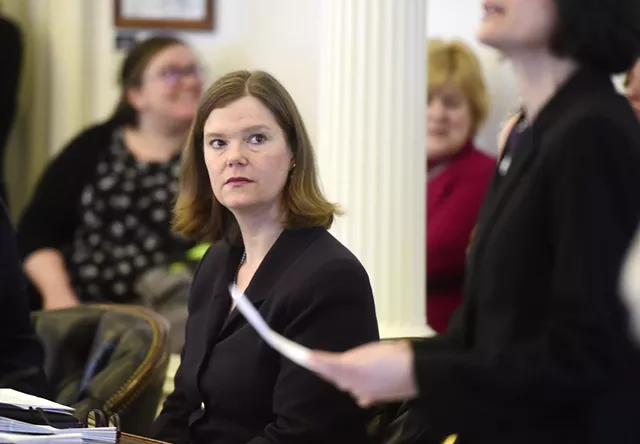The Senate Finance Committee on Thursday voted 5-2 to advance H.454, a sweeping education reform bill that has been the main focus of this year’s legislative session.
The bill aims to transform Vermont’s education governance and finance systems over the next several years by creating bigger school districts and instituting a new “foundation formula” that would give the state, rather than taxpayers, control over how much money local schools get.
While the bill originated in the House, the Senate Education and Finance committees have spent the last month or so making a number of substantive alterations to it — including changing the way in which new school districts would be drawn, decreasing the base amount each student would receive and speeding up the timeline for adopting a foundation formula.
While moving a major bill out of a key committee is often seen as reason to celebrate, it was clear on Thursday that even senators who voted in favor of the legislation were skeptical of the policy choices it contained.
“This is a bill in which everybody who’s been involved in it, regardless of which side they’re on, is coming away somewhat or entirely disappointed,” said Sen. Randy Brock (R-Franklin).
The bill was too complex, but also lacked specificity in some parts, Brock said, and he had little confidence in the funding figures it contained. Still, he said, he would vote in favor of it because the measure moves the process forward. There would also be opportunities, he said, to change the legislation since many of its provisions won’t go into effect for years.
“Doing nothing is even a worse option,” Brock said.
Sen. Ann Cummings (D-Washington), the finance committee chair, was similarly unenthusiastic. After voting in favor, she said she couldn’t remember a time she felt as bad about a vote as she did about H.454.
Since the session began, lawmakers have been talking about how to reform Vermont’s education system to lower the cost for taxpayers, improve quality and increase efficiency. But for the first six weeks or so, they let Gov. Phil Scott’s administration take the driver’s seat on the issue.
In January, Education Secretary Zoie Saunders unveiled an education overhaul plan that would consolidate Vermont’s 119 school districts into just five regional districts. The state would also adopt a foundation formula and provide a base amount of $13,200 per student, with extra money allocated to students who cost more to educate.
Legislators quickly decided that moving to five school districts was too drastic a change but they embraced the idea of larger districts to create economies of scale. They also stuck with the foundation-formula construct.
The House voted on H.454 last month. Its version called for creating a committee to meet this summer and come up with as many as three proposals for new school district boundaries by next legislative session. Five people with experience working in Vermont’s public education system and four legislators would make up the nine-member committee.
The House bill also included average class-size minimums: 12 students for kindergarten classes; 15 students for grades 1 to 4; and 18 students for grades 5 to 12. It mandated a move to a foundation formula — with a base funding amount of $15,033 per student — to start in 2029.
The Senate bill, in contrast, calls for a redistricting committee comprised exclusively of legislators to recommend at least one proposal to the legislature. The panel must also come up with an “alternative process to encourage and incentivize school districts to move toward larger, consolidated, and sustainable models of education governance” should the legislature fail to enact new school district boundaries by January 2026.
The Senate version took out the provision for class-size minimums and changed the base funding amount to $14,870 per student — a number that Sen. Ruth Hardy (D-Addison), one of the two “no” votes on Thursday, said was not rooted in data. In the Senate version, the foundation formula would go into effect on July 1, 2027, two years earlier than the House version.
“This bill will be devastating to our education system,” Hardy said. “It will create chaos and it will not provide structural change we need … nor will it provide the property tax relief that Vermonters have asked us to deliver.”
Sen. Martine Gulick (D-Chittenden-Central), the other “no” vote, said the bill was passed in “a slipshod manner” that left her feeling “disheartened.”
The bill will next go to the Senate Appropriations committee before moving to the Senate for a full vote. If the Senate approves the measure, it will ultimately head to a conference committee where three House members and three senators will try to reach consensus.

